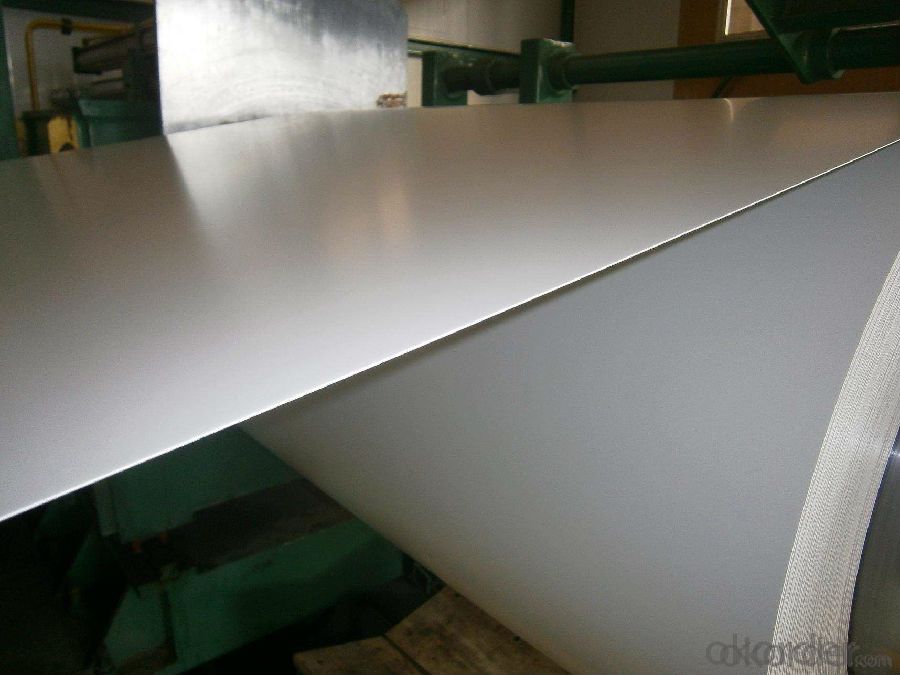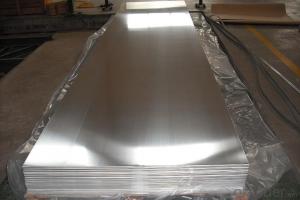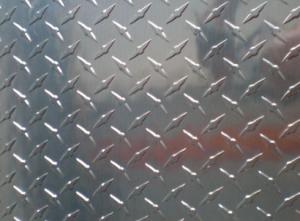Alucobond / Aluminum Composite Panel for Construction - Perforated Aluminum Sheets
- Loading Port:
- Shanghai
- Payment Terms:
- TT OR LC
- Min Order Qty:
- 8 m.t.
- Supply Capability:
- 1000 m.t./month
OKorder Service Pledge
OKorder Financial Service
You Might Also Like
Specification
Structure of Alucobond / Aluminum Composite Panel for Construction Description:
Coated aluminum coil/sheet are of a wide range of colors, which gives wonderful appearance no matter in residential and commercial constructions of great exhibition centers.
The coated aluminum coil/sheet have been widely used in the fields of construction and decoration( garage doors, ceiling etc.), electronic appliances, lighting decoration, air-condition air pipes, sandwich panels and drainages etc.
Main Features of the Alucobond / Aluminum Composite Panel for Construction:
1) High flexibility
2) Impact resistance
3) Excellent weather-proof durability
4) Anti-ultraviolet
5) High erosion resist
Images of the Alucobond / Aluminum Composite Panel for Constructionl:



Alucobond / Aluminum Composite Panel for Construction Specification:
Alloy | A1100,A3003,A1050,A8011 etc |
Temper | H16,H18,H24 |
Thickness | From 0.024mm to 1.2mm |
Width | Standard width:1240mm |
Special width:1300mm,1520mm,1570mm,1595mm | |
Diameter | Standard dia:1200mm |
Interior dia:150mm,405mm,505mm | |
Weight | 2.5 T/coil,3.0 T/coil |
Coating | PE, PVDF, AC |
Surface | Embossed, mill finish, coated |
Color | AS to code RAL |
Gloss | 10-90%(EN ISO-2813:1994) |
Coating Thickness | PE: more than 18 micron |
PVDF: more than 25 micron | |
Coating Hardness (pencil resistance) | More than 2h |
Coating adhesion | 5J(EN ISO-2409:1994) |
Impact Resistance | No peeling or cracking(50 kg/cm,ASTMD-2794:1993) |
Flexibility (T-bend) | 2T |
MEK resistance | More than 100 |
FAQ:
a.What is monthly capacity
---CNBM is one stated own company and our monthly capacity is about 2000tons.
b. Now which countries do you export your goods?
---Now we export to South East Asia,Africa, North America,South America ect.
- Q: Are aluminum sheets suitable for pharmaceutical packaging?
- Yes, aluminum sheets are suitable for pharmaceutical packaging. Aluminum is widely used in the pharmaceutical industry due to its unique properties. It is a lightweight material that provides excellent protection against moisture, oxygen, and light. This makes it ideal for packaging sensitive pharmaceutical products that require a high level of protection and stability. Aluminum sheets are also highly resistant to corrosion and have good heat conductivity, allowing for efficient heat sealing during the packaging process. Furthermore, aluminum is non-toxic and non-reactive, ensuring the safety and integrity of the pharmaceutical products. Overall, aluminum sheets are a reliable and commonly used material for pharmaceutical packaging.
- Q: What are the different methods of joining aluminum sheets?
- There are several methods of joining aluminum sheets, including welding, adhesive bonding, mechanical fastening (such as riveting or screwing), and clinching. Each method has its own advantages and considerations, depending on the specific application and desired outcome.
- Q: This question asks for a comparison between aluminum sheets and other roofing materials in terms of their characteristics and performance.
- <p>Aluminum sheets are lightweight and highly durable, offering excellent resistance to corrosion and weathering. They are energy-efficient, reflecting heat and reducing cooling costs. Compared to materials like asphalt shingles, aluminum is more expensive but lasts longer, with a lifespan of 40-50 years. Unlike clay or concrete tiles, aluminum is less prone to breakage and is easier to install. It also doesn't rot or warp like wood, and it's fire-resistant. However, it can be noisy during rain and is less visually appealing than some other materials, but its modern and sleek appearance can be a design advantage.</p>
- Q: Are aluminum sheets non-magnetic?
- Indeed, aluminum sheets lack magnetic properties as they are not ferromagnetic. Instead, they fall under the classification of paramagnetic materials with a feeble reaction to magnetic fields. Consequently, aluminum sheets fail to exert any magnetic attraction or retention.
- Q: Are the aluminum sheets suitable for manufacturing transportation containers?
- Yes, aluminum sheets are suitable for manufacturing transportation containers. Aluminum is a widely used material in the transportation industry due to its excellent properties. It is lightweight, yet strong and durable, making it ideal for containers that need to be transported over long distances. Aluminum sheets also have good corrosion resistance, which is crucial for containers that may be exposed to different weather conditions during transportation. Additionally, aluminum is easily recyclable, making it an environmentally friendly choice for manufacturing transportation containers. Overall, aluminum sheets provide the necessary strength, durability, and corrosion resistance required for manufacturing transportation containers.
- Q: This question asks for a comparison between the benefits and drawbacks of utilizing products made from recycled aluminum.
- <p>Advantages of using recycled aluminum products include reduced energy consumption, lower greenhouse gas emissions, and a decrease in the need for raw material extraction. It also promotes waste reduction and supports a circular economy. Disadvantages might include potential quality concerns, as recycled aluminum might not always meet the same strength and durability standards as new aluminum. Additionally, there can be higher initial costs associated with recycling processes and the need for advanced sorting and processing technologies.</p>
- Q: Is it possible to use adhesive instead of fasteners to bond aluminum sheets to a structure?
- <p>Yes, you can use an adhesive to attach aluminum sheets to a structure. However, it's important to choose an adhesive that is specifically designed for bonding aluminum, as not all adhesives provide the necessary strength and durability. Structural adhesives that are compatible with aluminum can offer a strong bond and are often used in applications where a clean, seamless appearance is desired or where fasteners are not suitable. It's crucial to ensure that the adhesive is resistant to the environmental conditions the structure will be exposed to, such as moisture, temperature fluctuations, and UV radiation. Always follow the manufacturer's instructions for surface preparation and application to achieve the best results.</p>
- Q: Status of aluminum sheet F
- Status of aluminium plateThe F is free, and the aluminum sheet state is not limited. It is suitable for the products which have no special requirement for the working hardening and the heat treatment conditions in the forming process. The mechanical properties of the products in this state are not specifiedO is an annealed state, that is, a fully soft state, suitable for fully annealed products with minimum strength
- Q: Are aluminum sheets suitable for heat sinks?
- Aluminum sheets are well-suited for heat sinks. They are a lightweight and highly conductive metal, making them a great choice for dissipating heat. With their high thermal conductivity, they efficiently transfer heat away from the source and distribute it over a larger surface area. Moreover, aluminum exhibits good corrosion resistance, which is crucial for heat sinks that may come into contact with moisture or other environmental elements. The flexibility and ease of working with aluminum sheets also allow for the creation of various heat sink designs to meet specific cooling needs. In summary, aluminum sheets are extensively employed in heat sink applications due to their exceptional thermal conductivity, lightweight nature, resistance to corrosion, and ease of fabrication.
- Q: What are the advantages of using aluminum sheets?
- Aluminum sheets offer numerous benefits for various applications. To begin with, their lightweight nature makes them easy to transport and handle. This makes them particularly suitable for industries where weight plays a crucial role, such as aerospace and automotive sectors. Moreover, aluminum sheets possess exceptional corrosion resistance properties. They have a natural resistance to rust and can endure harsh environmental conditions, including moisture, chemicals, and UV rays. As a result, they are highly durable and long-lasting, reducing the need for frequent maintenance and replacements. Additionally, aluminum sheets are highly malleable and can be easily shaped into different forms and sizes. This flexibility allows for customization and versatility in design, enabling manufacturers to create intricate structures and products. Furthermore, aluminum sheets exhibit remarkable thermal and electrical conductivity. They effectively dissipate heat and conduct electricity, which makes them well-suited for applications in the electrical, heating, and cooling industries. Another advantage of utilizing aluminum sheets is their aesthetic appeal. Aluminum has a sleek and contemporary appearance, making it a popular choice for architectural and interior design projects. It can be effortlessly painted or coated to achieve various colors and finishes, further enhancing its visual allure. Lastly, aluminum is a sustainable material. It is fully recyclable and can be repeatedly melted and reformed without losing its properties. This makes aluminum sheets an environmentally friendly option, contributing to waste reduction and a lower carbon footprint. In conclusion, the advantages of employing aluminum sheets include their lightweight nature, corrosion resistance, malleability, thermal and electrical conductivity, aesthetic appeal, and sustainability. These qualities make aluminum sheets the preferred material for numerous industries and applications.
Send your message to us
Alucobond / Aluminum Composite Panel for Construction - Perforated Aluminum Sheets
- Loading Port:
- Shanghai
- Payment Terms:
- TT OR LC
- Min Order Qty:
- 8 m.t.
- Supply Capability:
- 1000 m.t./month
OKorder Service Pledge
OKorder Financial Service
Similar products
Hot products
Hot Searches
Related keywords




























